The cheetah is one of the most recognizable cats and is well known as the fastest land animal. The black tear-like facial streaks on the cheetah's small head are a signature feature that completes the look.
The body of a cheetah is highly adapted for speed and is very different from the strong build of other big cats like lions and leopards.
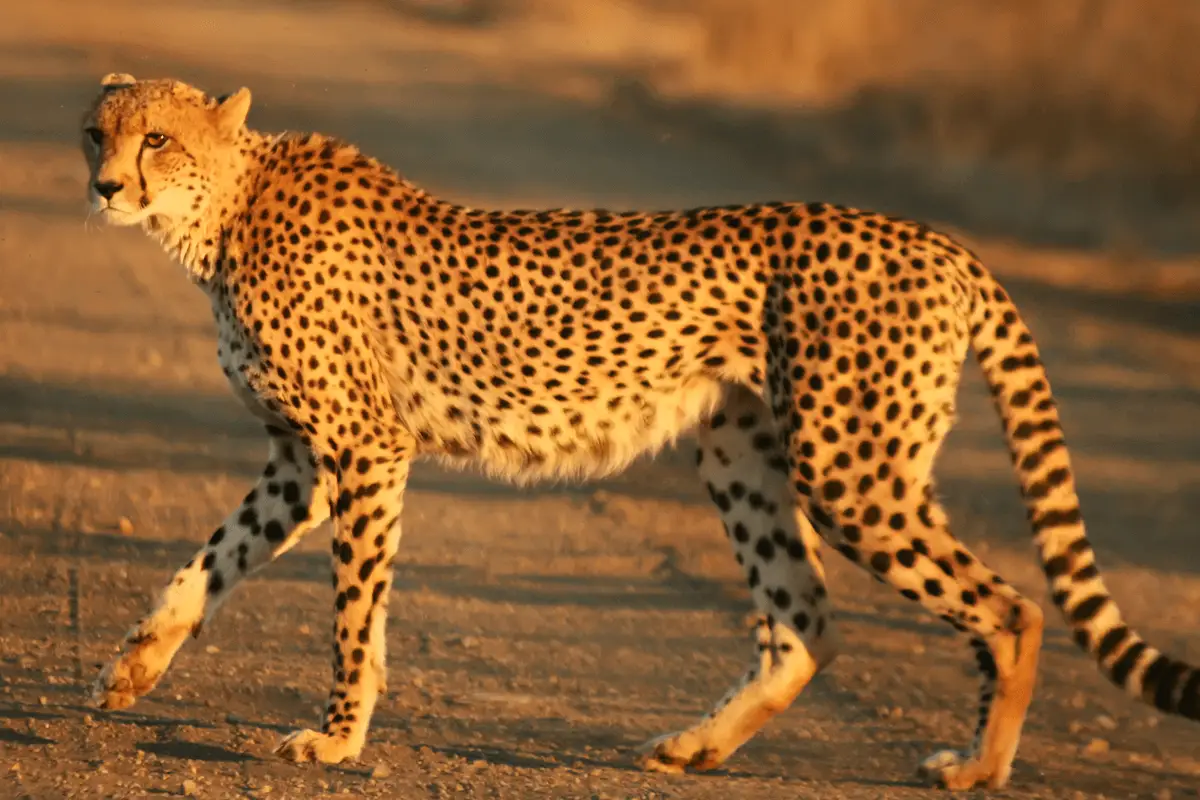
In this article, we'll take a deeper look at cheetahs and all the things that make them truly interesting. From where they live, to how they hunt and whether they are in danger, this article will give you a deeper understanding and appreciation for cheetahs.
Quick Facts
Here is a quick factsheet about cheetahs to tease you for the upcoming details.
| 1 | Common Name | Cheetah |
| 2 | Scientific Name | Acinonyx jubatus |
| 3 | Habitat Range | Africa & Central Iran |
| 4 | Height | 2.1 - 3 feet (shoulder) |
| 5 | Weight | 21 - 72 kg |
| 6 | Running Speed | 80 -130 km/h |
| 7 | Main Diet | Fresh Meat |
Fascinating Facts About Cheetahs
1. Name Origins
Cheetah is a descriptive word derived from the Hindi word "Chita" - which translates to "spotted one".
There are other origins for the scientific name, about the non-retractable claws but "spotted one" takes the number one spot.
2. Close Relatives
The closest animal relatives to the cheetah are the cougar and the jaguarundi. While it isn't wrong to call a cheetah one of the big cats, the differences are significant from the other cats.
The evolutionary separation between cheetahs (Acinonyx genus), domestic cats (Felis genus) and lions (Panthera genus) happened around 7 million years ago. This is when they last had a common ancestor and each group took its separate evolutionary path.
Other relatives of the cheetah include lions, leopards, tigers, jaguars and other big cats.
3. Cheetah Habitat
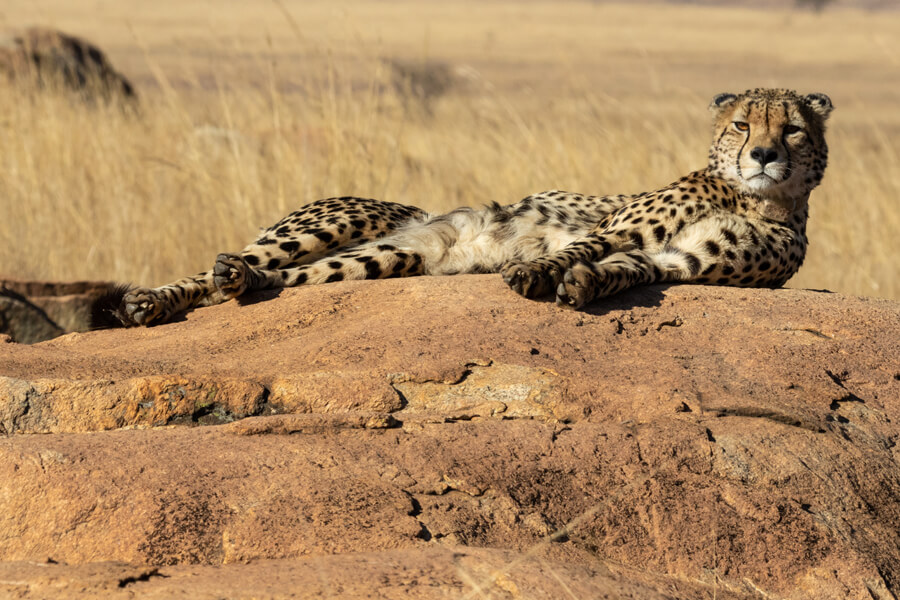
Cheetahs mostly live in eastern and southern Africa. In Asia, Cheetahs are limited to central Iran in very small numbers. The largest population of cheetahs is sparsely spread out over Angola, Botswana, Namibia, South Africa, and Zambia.
While not strictly selective, cheetahs live in places with greater availability of prey, good visibility, and smaller chances of encountering larger predators. This makes the savannah and semi-arid areas such as Serengeti and Kalahari ideal homes for cheetahs
4. Where To See Cheetahs In The Wild
The home range of cheetahs is used to cover most parts of Africa's savannah and semi-arid areas. Cheetahs are now only found in fewer areas.
Here are the countries that have cheetahs.
|
|
|
|
|
|
|
|
|
|
|
|
|
|
|
|
|
|
|
|
|
5. Cheetah Size & Weight
A cheetah is physically almost as big as a leopard. Unlike the leopard, the cheetah is built lightly and has a smaller head.
Cheetahs have a long, slender body measuring 14 feet, with a long tail (2 to 3 feet) that generally ends in a white tuft. Cheetahs are about 2.5 feet tall at the shoulder.
Cheetahs have a big variation in their weight and adults can weigh between 21 and 72 kilograms. Cheetah cubs are born weighing between 150 and 300 grams.
The weight of a cheetah is determined by many factors such as sex, age, location, health, and subspecies. While cheetahs can't easily be separated between genders, male cheetahs tend to be slightly bigger and weigh more.
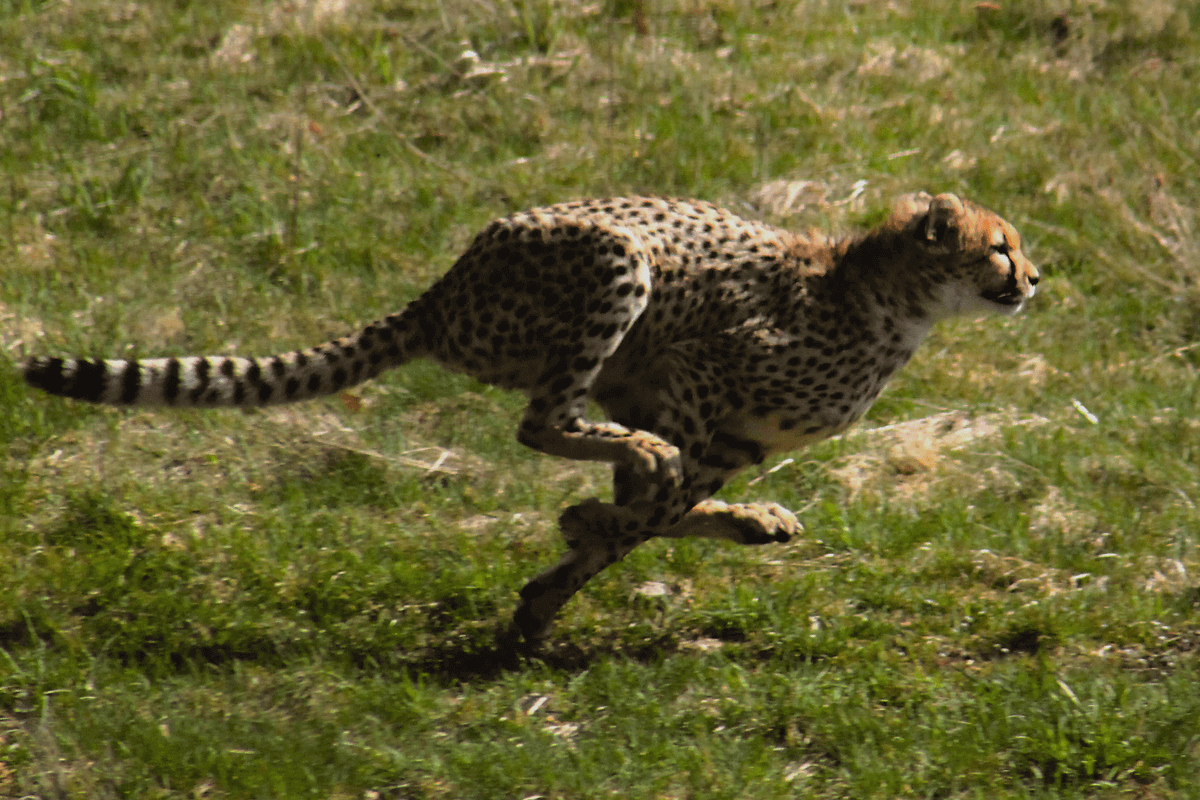
6. Cheetah Running Speed
The cheetah is the fastest land animal and can typically reach speeds of up to 100 km per hour. A cheetah can go from 0 (zero) to 60 Miles per hour in just 3 seconds. Most supercars can't accelerate that fast.
And for something no supercar can do, a cheetah can decelerate dramatically and slow down from 93 km/h to 23 km/h in just 3 strides.
7. Cheetahs Have Great Eyesight
Cheetahs have perfect vision and can easily see detail at a distance of 5 kilometres. That is better than most binoculars.
While cheetahs don't see as well at night, as the other big cats, they do have excellent vision for distant objects and may even see more colours, unlike other big cats.
8. The Long Tail Helps With Speed
Cheetah's tails do look big and cumbersome given the cheetah's size but the tail is a speed adaptation. Like the rudder of a boat, the tail helps the cheetah steer and change direction at very high speed.
9. Cheetahs Spots
Cheetahs have between 2,000 and 3,000 black spots covering their golden-tan fur. Like their size, the number of spots is determined by many factors such as local habitat, age, and gender among others.
10. Cheetahs Have Unique Spots
The spots of every cheetah are unique and can be used to identify one from the next. Just like the stripes of the zebra or the fingerprints on humans, no two individuals have the same pattern.
While this is extremely hard for most people if you get enough pictures of cheetahs, you can notice the difference. Researchers have tools to help them do this much faster.
11. The 'King Cheetah'
The king cheetah is a variety of cheetah with a mutation for cream-coloured fur, that is marked by large botchy spots and three dark wide stripes at the back. The King cheetah has thick fur and spots that merge to form the 3 stripes.
If two mating cheetahs carry the mutated gene (Taqpep) some of their cubs can be expected to become king cheetahs.
12. Cheetahs Are Quite Smart
While they wouldn't compare to animals such as chimpanzees or elephants, cheetahs are smart animals. They hunt by predicting the moves of their prey and being careful to pounce when they are close enough to catch the animal.
They also avoid confrontation with the bigger predators and animals, something that would likely not end up in the cheetah's favour.
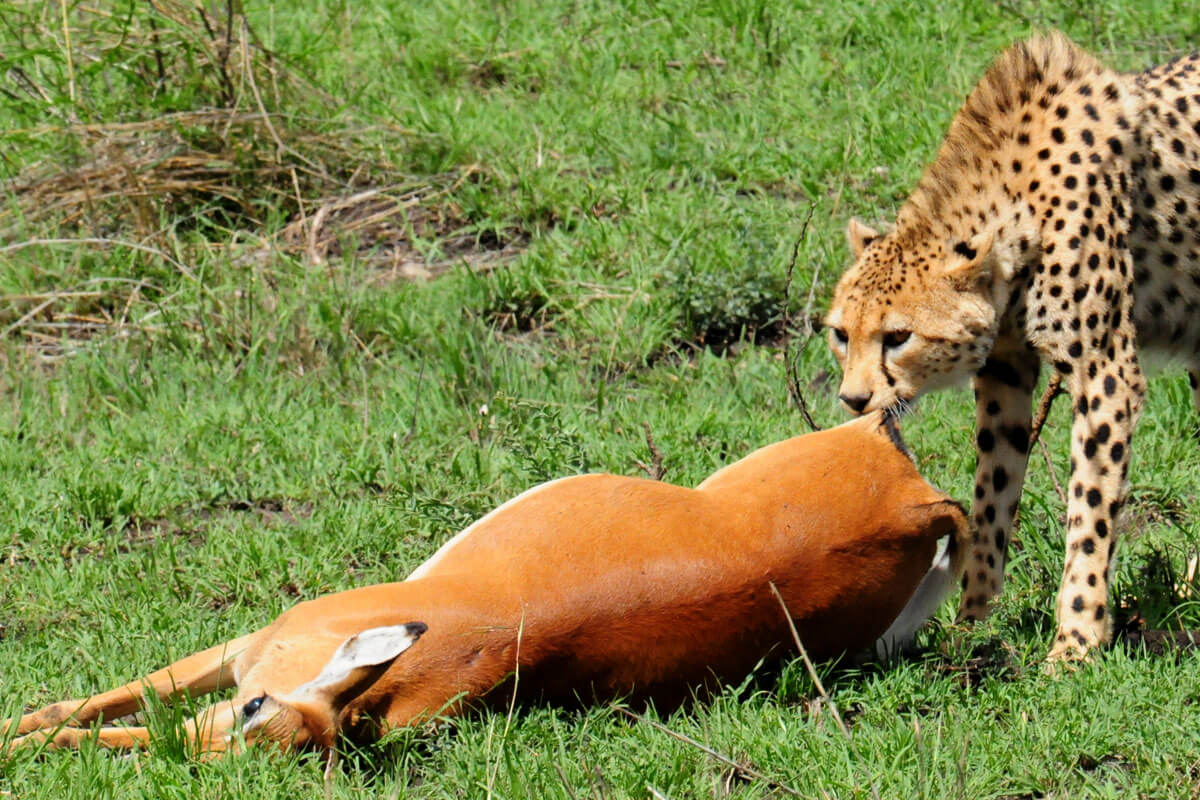
13. Hunting
Cheetahs typically hunt during the day and avoid larger predators such as the primary nocturnal lion. During the hot period, cheetahs will adjust their hunting time to after sundown to escape the high temperature of the daytime.
A cheetah hunts small to medium-sized prey weighing between 20 and 60 kg. Most of the hunts are animals under 40 kg.
Cheetahs will commonly hunt medium ungulates such as gazelles, impalas, duikers, wild goats, and more. Occasionally a group of cheetahs will prey on larger animals such as wildebeest but this is very rare.
14. How Cheetahs Hunt
Because of the cheetah's good vision, it can spot its prey at long distances and start stalking it for a long distance. The cheetah will stalk its prey and try to get as close as possible before pouncing - usually around 200 meters from the prey.
While the cheetah is fast, it is a sprinter and not an endurance runner and its chase will oftentimes last a minute. The longest run measured by a 2013 study, of a cheetah's chase was 559 meters.
While the wild hunting action might take just 1 minute, the preparation and stalking of prey often take much longer and are calculated. After killing its prey, the cheetah will first rest for some minutes to catch its breath after the exhausting chase.
Related article: Comparing Africa's most successful hunters in the wild
15. What Cheetahs Eat
Cheetahs are carnivores and eat the meat of the animals they hunt. They mostly hunt small to medium-sized animals weighing under 40 kg.
The common animals hunted and eaten by cheetahs include Dama and Dorcas gazelles, impala, springbok, Thomson's gazelle, and common duiker among others.
Related article: What do cheetahs eat in the wild

16. How Much A Cheetah Eats
On a daily basis, a cheetah will eat around 4 kilograms (8.8 lb) of meat. Given that the average adult human eats around 2 kg per day, a cheetah eats twice as much food, in the form of raw meat.
There are variations to this that are determined by things like availability of food which can mean both the chances of hunting, as well as the chances of the cheetah's kill being stolen by lions or hyenas.
In some cases, a cheetah can eat much more than this average estimation. For example, a cheetah in Etosha National Park of Namibia was found to consume as much as 10 kilograms in just 2 hours.
17. Female Cheetahs Are Solitary
Adult female cheetahs are solitary and live alone except when they have cubs. Male cheetahs often live in groups of 3 or 4, made up of brothers.
Female and male cheetahs have little interactions which are for purposes of mating, after which the males go back to their groups and the female will have the company of cubs until they are old enough to venture out on their own.
18. How Cheetahs Reproduce
Female cheetahs give birth after a pregnancy period of 3 months. The litter usually has up to 2 to 8 cubs which have to be protected by their mother from predators.
Young cheetah cubs will stay under the care of their mother for up to 2 years. In this period the mother cheetah is responsible for teaching them the various survival skills that a cheetah must possess - to stay alive in the wild.
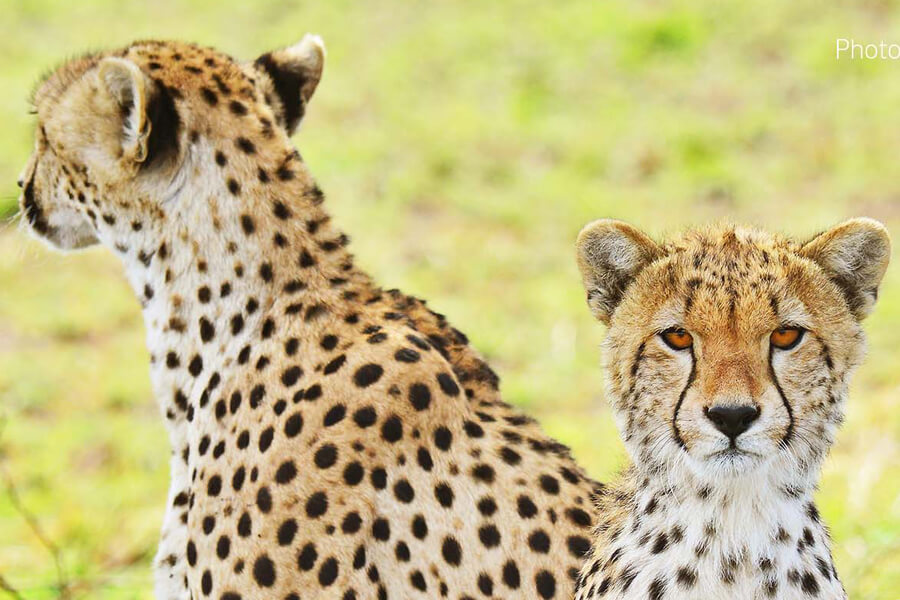
19. Lifespan Of Cheetahs
The lifespan of cheetahs in the wild is usually 10 to 15 years. This is about the average for the other cats in Africa since lions and leopards live around the same number of years.
In a captive environment where they are protected from the dangers of the wild and receive veterinary care, cheetahs can live longer - making it to 20 years.
Related article: Comparing the lifespan of African animals
20. How Cheetahs Communicate
Cheetahs make a range of sounds and vocalizations as a way of communicating with each other. Cheetahs purr, meow, chirp, churr, hiss, growl, and a whole lot more.
Unlike other big cats like the lion, cheetahs don't roar and their sounds are anything but scary for the wilderness comparisons.
21. Animals That Kill Cheetahs
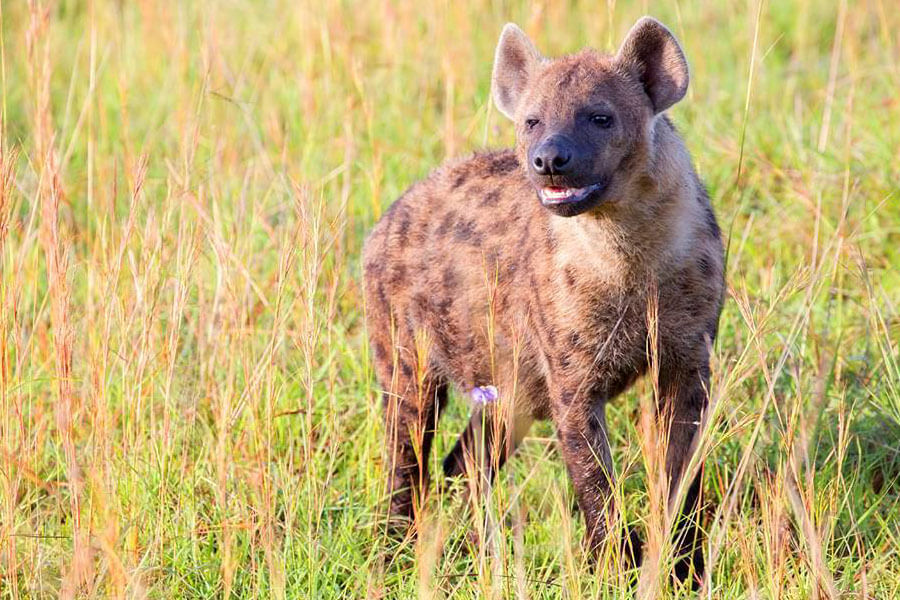
Cheetahs try to avoid other big predators because animals such as lions, hyenas, African wild dogs, and leopards often kill cheetahs, especially young cubs.
By the nature of their size, cheetahs can't mount a fight against many big hunters and try to stay out of the way. Most cheetahs are killed as cubs when their mother goes hunting and another predator finds them.
22. Conservation Status
Yes, Cheetahs are in danger. The International Union for Conservation of Nature (IUCN) has classified them as vulnerable species. Even worse is the fact that the numbers are decreasing.
23. Threats Facing Cheetahs
In the wild, the biggest threats for cheetahs are habitat loss and population fragmentation. Habitat loss is a result of human activity which needs land for agriculture and urbanisation.
Population fragmentation slows down the rate at which the cheetah population could grow.
24. Wild Population Of Cheetahs
According to IUCN research, there are around 6600 cheetahs left in the wild. As mentioned above, most of these are in Eastern and Southern Africa, with some Asiatic cheetahs only left in Iran.
25. How Tourism Helps Cheetahs
Tourism helps protect cheetahs by contributing to various conservation activities such as research, outreach, local economy in the nearby communities, and more.
While it is the wild, and nature has to happen for each animal, tourism helps to protect the habitat and prevent human factors such as poaching.
When the local communities benefit from the conservation, they have an incentive to become wonderful partners in protecting cheetahs and all the other animals in the ecosystem.
Final Thoughts
The fact that cheetahs are built for maximum speed is fascinating, and watching a hunt with your own eyes is bound to give you a true appreciation of nature like nothing else can. We hope this article has encouraged you to add cheetahs to your bucket list of African animals to see.
And when you get to take that trip to see such animals as cheetahs on an African wildlife safari, know that the money you spend goes a long way in keeping these animals and ecosystems alive and intact.
While cheetahs are fascinating animals, it is bad that the numbers in the wild are decreasing - which is bad for the ecosystem. We believe that the ongoing conservation efforts turn this trend around such that cheetahs can still roam the wilderness - the way nature intended.
